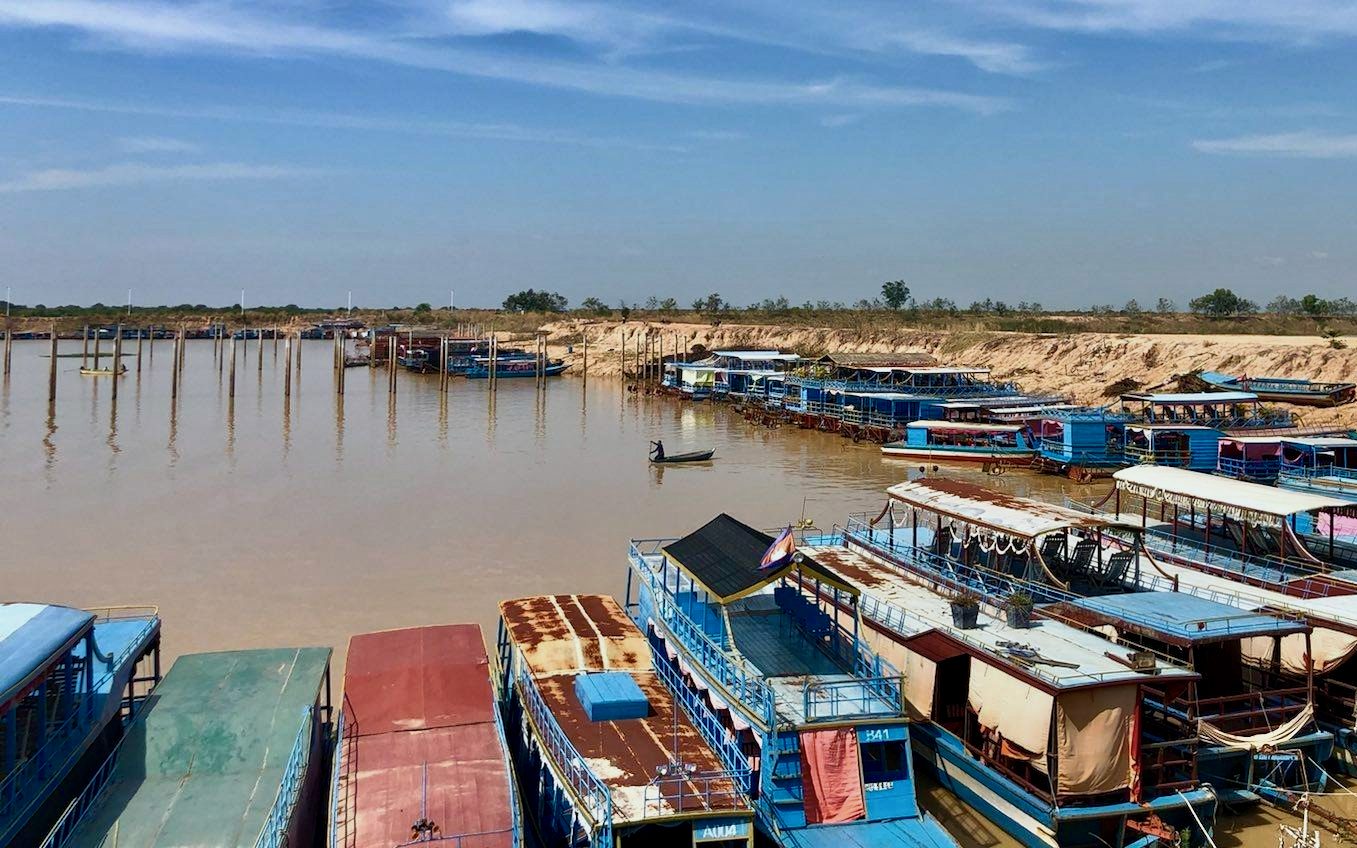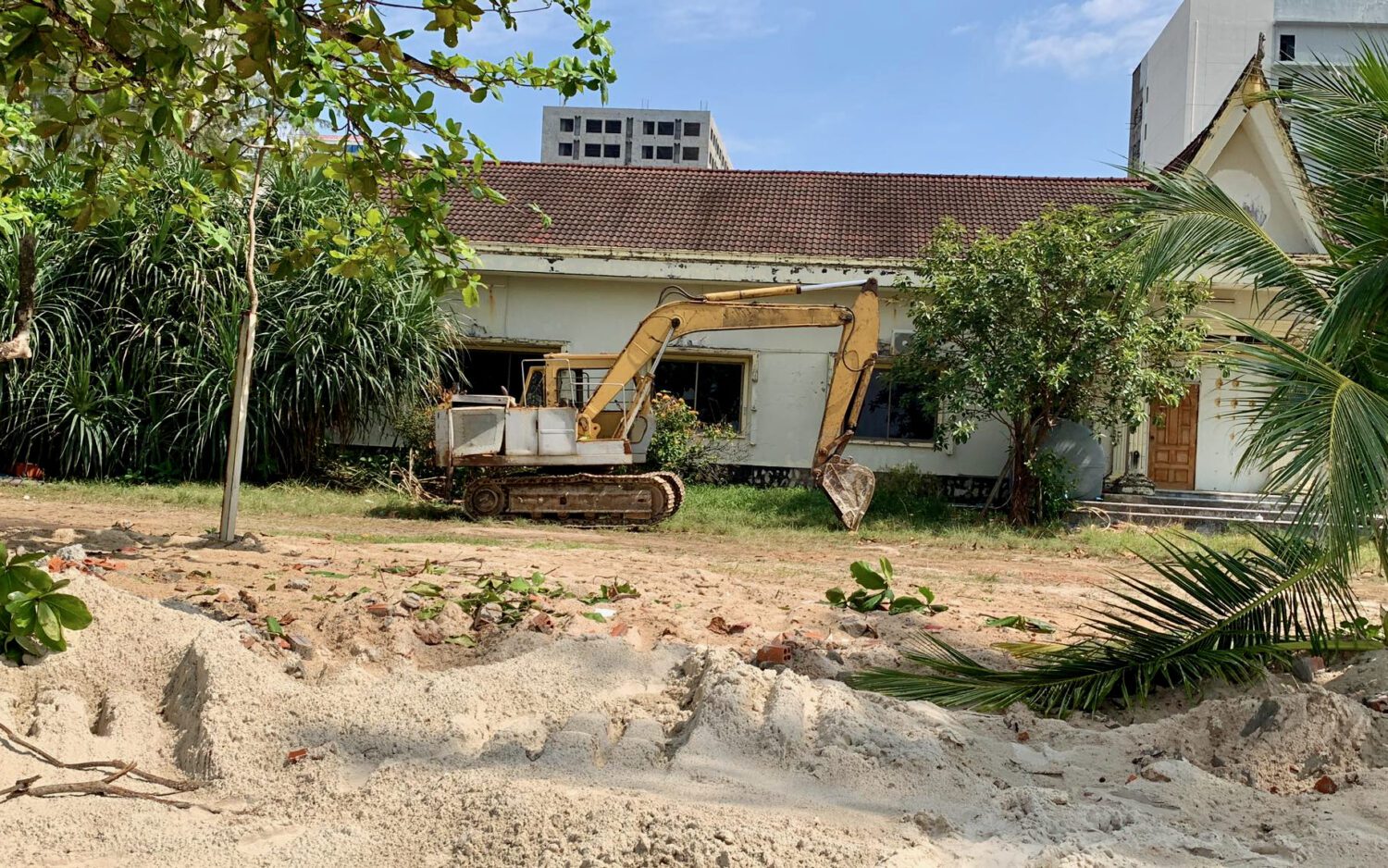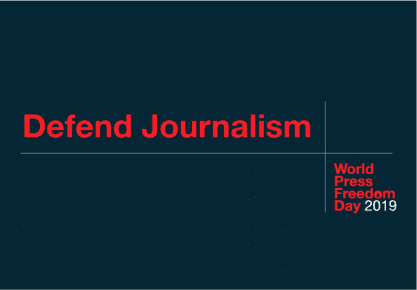Conservationists in Cambodia are noticing increasingly strange trends within their protected areas: Fires are breaking out across a parched Battambang; elephants are wandering into Mondulkiri village centers in search of water.
As ponds and streams evaporate in severe droughts in Preah Vihear, birds and other animals are losing sources of water, and fish are disappearing, noted Ken Sereyrotha, the executive director of conservation organization WCS Cambodia. With nothing to fish and less available water, residents are changing their habits too, sometimes burning off new land for new crops, if not moving to the cities for factory work.

“This year [brought] one of the most vulnerable and unpredictable climates, and there needs to be reconsideration in terms of planning, in terms of design of intervention,” Sereyrotha said.
At the core of these new trends are two inseparable issues, conservationists say: the rapid development of Cambodia, and a changing global climate.
Climate change is already hitting Cambodia’s provinces in subtle and sporadic ways, disrupting the country’s agriculture and electricity.
Environment Ministry spokesman Neth Pheaktra said the weather had grown more extreme in its variation: In 2012, rice production tumbled after a severe drought parched nearly half the country. The following year, intense rainfall led to flash floods that damaged about 200,000 homes and killed at least 150 people. And this year, the droughts, combined with the growing strain of hydropower on the Mekong River system, brought the river to its lowest level in 100 years.
According to its latest report to the U.N., Cambodia saw annual temperatures rise 0.8 degrees Celsius since 1960. The temperature is projected to climb higher: According to a 2015 estimate by an Environment Ministry researcher, the average annual temperature in the hot season is expected to rise from 32.7 degrees Celsius in 2008 to 37.1 degrees in 2099. But the most evident impact has been through a shift in the annual rainfall cycle.
In the country’s first report to the U.N.’s Framework Convention on Climate Change submitted in 2015, Cambodia was one of the countries deemed most vulnerable to climate change, in particular due to risk of floods, droughts, severe windstorms and seawater rise. The report also noted that Cambodia had a net carbon sink — meaning its forests absorbed more greenhouse gases than they produced — in 2000, but the country has industrialized dramatically in the past two decades.
The Impact Is Visible, but Camouflages With Other Issues
Saber Masoomi, country coordinator for Wildfowl and Wetlands Trust (WWT) Cambodia, said the country’s remaining wetlands must be protected and used sustainably, or Cambodia risks more extreme flooding.
For Cambodia’s wetlands — which mitigate pollution, serve as food sources and absorb flooding naturally — the impacts seem to conflict. Water levels in coastal wetlands, like Koh Kong’s Koh Kapik, are flooding to new levels due to elevating sea levels, while wetlands far from the coast are drying out, he said.
Masoomi is cautious about connecting these changes to climate change alone, because wetlands, particularly those surrounding Phnom Penh, have been reduced or even filled due to the demand for land. The signs of trouble — floods, droughts and loss of plants and animals in wetland ecosystems — are there, Masoomi said, but WWT has only just begun studying the impacts in Cambodia’s wetlands, and the signs of damage don’t simply stem from climate change.
Though Cambodia’s farmers and fishers have been the ones so far raising concerns to researchers about destroyed rice crops and disappearing fish, Courtney Work, a climate anthropologist studying Cambodia and an assistant professor at Taiwan’s National Chengchi University, suspects that urban residents — in Phnom Penh and cities around the world — will face the greatest consequences when more extreme weather events hit urban centers.
“[Climate change] is going to break the roads, it will inundate ports, we’re not going to be able to travel and we’re not going to have food,” she said.
“All the focus of these big developer donors is on helping these poor vulnerable people … The vulnerable ones are you guys who are sitting in air conditioning with food brought to you.”
Catching Some of the Causes
In Cambodia, deforestation is considered to be the biggest contributor to climate change. Since 2010, conversion of forests into agricultural land became Cambodia’s largest contributor to the amount of carbon dioxide in the atmosphere by a long shot. In 2016, the latest year for which data is available, the country exceeded 160 million tons of emissions in a year — and that estimate has yet to factor in emissions from recent years of explosive urban development. Deforestation degrades the country’s natural resources through erosion, changing underground water and rain cycles, and diminishes Cambodia’s capacity to absorb carbon.
A study released this year of tropical and temperate forests around the globe charted significant rises in temperature over the course of a decade of deforestation. On average, temperatures rose about 0.38 degrees Celsius in tropical forests and 0.16 degrees in temperate forests. Though the study focused on the Amazon rainforest in Brazil, Work said that residents living in and around Cambodia’s Prey Lang Wildlife Sanctuary all complained about the heat during her visit last month, more than in previous years.
In response, Cambodia is testing national REDD+ programs in Siem Reap and Pursat provinces. Before these projects began this year, international organizations and companies have introduced REDD+ schemes throughout Cambodia more than 10 years ago.
Under the “reducing emissions from deforestation and degradation” (REDD+) program, global companies can receive credits by funding forest protection programs in designated areas in Cambodia and other participating countries. Heavily polluting companies fund reforestation and protection efforts in order to “neutralize” the greenhouse gas emissions they emit, but the program is somewhat toothless while the globe’s polluters have no real obligation to offset their emissions.
In addition, Cambodia has failed, time and again, to control large-scale illegal logging in protected areas with national or REDD+ designation.
Think Biotech, a subsidiary of South Korea’s Hanwha Corporation, set up a timber plantation within the Prey Lang forest — later designated a wildlife sanctuary — under the guise that it would offset carbon for the South Korean government. Prey Lang activists complain regularly that Think Biotech is clearcutting within their plantation, hiring residents and foreigners to cut down trees from the surrounding areas, and violating the company’s original agreement but allegedly in collusion with the government.
Observers have also been critical of a REDD+ project run by WCS in Keo Seima Wildlife Sanctuary, claiming that sections of the REDD+ protected area have been deforested. Sereyrotha, the WCS Cambodia director, defended the project, stating that logging breaches buffer zones rather than the boundaries of the protected area, where the Walt Disney Corporation notably purchased $2.6 million of performance-based carbon credits.
Last year, the airline Virgin Atlantic notably stopped purchasing credits from a REDD+ program in Oddar Meanchey that was obliterated by logging connected to Cambodian military personnel.
Demand for a Developed Cambodia Is Taking Its Toll
Throughout her nearly 15 years studying Cambodia, Work, the climate anthropologist, said that most of the people she speaks to in the provinces understand the impacts of climate change, but they tend to associate climate change with deforestation because interventions focus heavily on loss of forest and general impacts in rural areas, rather than stabilizing the voracious demand for cars, factories and air conditioning in Phnom Penh and other urban corridors.
“What you see on the ground in Cambodia are programs and projects and interventions to address deforestation,” she said. “We do not see anything on the ground in Cambodia to try to address the emissions from factories, cars and shipping.”
The country’s carbon emissions might not come close to the 16.5 metric tons of carbon per person that Americans consumed in 2014, nor the 7.5 metric tons offset per person in China that same year, but Cambodia’s carbon consumption grew a whopping 138 percent from 2004 to 2014 to 0.44 metric tons per person, and likely rose further based on the rate of industrial development over the past five years.
Consumer spending is growing at a breakneck rate, and with it, Cambodia’s vehicle imports jumped 50 percent between 2017 and 2018. Based on U.S. Environmental Protection Agency estimates of an average car emitting 4.6 metric tons per year, the approximately 675,000 cars on Cambodia’s roads in 2018 would emit 3.1 million metric tons of carbon, while the 3.8 million motorbikes would damage the environment much more over time.
Technological Solutions to Cambodia’s Climate Risks?
As one of the countries deemed most vulnerable to climate change, Cambodia gets significant climate-related grants — including $283 million in financing from the Global Environmental Facility since it started issuing grants in 1997 — which allow the country and its sponsors to test innovative climate adaptation programs.
In a recent project, the U.N. Development Programme in conjunction with human and social rights NGO People in Need (PIN) are pushing an early warning system run by provincial and national government to communicate via mobile phones when residents will be facing floods. This year the program sent recorded warnings to more than 50,000 subscribers in eight provinces, said Federico Barreras, PIN’s program manager on disaster management.
Barreras noted that floods — Cambodia’s biggest climate-related disaster risk — are growing in frequency and strength over the past few decades, based on data available. The country’s response time and capacity have improved at the district and local levels through the warning system and workshops on data collection and warning residents throughout rural Cambodia, Barreras said. However, businesses, particularly those developing in urban areas, need to put a higher emphasis on climate and disaster risks, including creating flood insurance and conducting their own research on how to adapt to higher and more frequent floods.
“In the future, the private sector needs to step in and start investing in disaster risk,” he said. “In a country like the Philippines, where they have a high risk of natural disaster, the private sector invests in disaster preparedness [and businesses] do fund their own research.”
As a food science technology specialist based at Singapore’s Nanyang Technological University, William Chen sees potential for Cambodia to modify the way it produces and consumes food, such as preserving more wetlands where farmers can fish and grow produce in the same space, improving irrigation systems and relying more on alternative proteins like insects that don’t emit the same amount of carbon as animals consumed for meat.
“Technological innovations would not cost a lot of money to change farming practices, but that would need a little pressure on the agriculture sector, and there should be political will to encourage new practices,” he said.
However, Chen warned that piecemeal solutions can’t be treated as sufficient unless government institutions and the private sector — both in Cambodia and abroad — make extensive efforts to dramatically reduce waste and emissions while protecting the carbon-absorbing forests that remain.
“The concern [about climate change] is real, and increasingly more alarming, because we see the storms are getting stronger, the droughts are getting longer, and the flood can sustain longer.”













